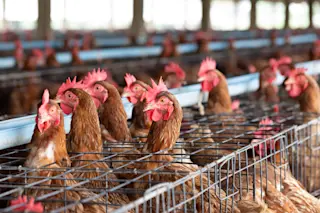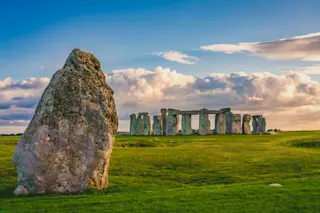Over at Scientific American Eric Michael Johnson has a very long post up, The Case of the Missing Polygamists. It is a re-post of something he already published at Psychology Today a few years ago. Though provisionally a review of Sex at Dawn, Johnson covers a lot of ground, and also has extensive quotations from Sarah Blaffer Hrdy. I'm reflecting upon the post for a second time because it is very rich in ideas, and lays out may different general concepts and specific propositions. The bottom line from what I can gather is that Johnson agrees with those thinkers who believe that agriculture and the Neolithic revolution to a great extent reshaped social relations, and give us a skewed perception of "normal" human societies. I'm not going to rehash all of the points in the piece, but will focus on just a few which I think I can extend upon fruitfully. Long time readers of this weblog know that I tend to accept that something radical shifted during the Neolithic revolution. I'm of the opinion that like most animals humanity's state was Malthusian during the age of hunter-gatherers, and of farmers. That is, gains in population eventually absorbed productivity increases due to technology (e.g., bow and arrow) or surplus land (e.g., settlement of the New World by humans). But different forms of Malthusianism can obtain different stable states. The rhythm of life of a Chinese peasant and a Bushmen are very different, despite the fact that both may operate on the Malthusian subsistence margin. Malthusianism is a end point, it does not specify the dynamic by which one proceeds toward it. Johnson relays the idea that prior to agriculture humanity had a matrifocal and de facto polyamorous bias. For the purposes of my thought here we need to separate the social and biological. In the social sense matrifocality simply means that males move between focal groups, while females remain in their natal groups. Polyamory implies that males and females may have multiple sexual relationships. In a genetic sense matrifocality should imply that Y chromosomes flow between groups (lower Fst), and mitochondrial lineages exhibit greater geographical constraint (higher Fst). In the longer term equitable pure polyamory would not be genetically distinguishable from pure equitable momogamy (because of more combinations in the former case there may be more diverse autosomal haplotypes, but I'm not sure this is very relevant for this discussion). It isn't innovative or surprising for someone to assert that agriculture was a major rupture in human history. Major public intellectuals routinely take a shot at characterizing what made it so special, and it's a lively area of scholarship. Rather, I will reiterate here what I have held for many years: the "traditional" and normative social systems common among civilized societies since the rise of agriculture and the emergence of mass society are cultural adaptations which serve to constrain impulses which are deeply hard-wired within our species. Elite lineages the world over arranged the pair bonds of their offspring for many generations, and yet this often meets resistance, or at least resignation. The tales of adulterous lovers subject to a tragic fate are common literary motifs. This is I suspect an aspect of evoked culture, the inevitable tension between our deep impulses driven by individual preferences, and the social obligations which many have to had fulfill as part of extended kinship networks which had accrued prestige and capital. Both of these are human universals, as are the consequences. The high culture literature records this tension, and elaborates upon it so as to model proper and correct behavior for elites so as to avoid tragedy. I have no doubt that hunter-gatherer societies had lineages which accrued prestige and capital. The modern hunter-gatherer societies which Eric Michael Johnson highlights are not representative of the human past. They have been relegated to marginal land. In the past hunter-gatherer societies drew upon lands with greater primary productivity, so the chasm between themselves and their farming successors in terms of physical capital and social stratification was often less than we may expect using the modern relics as references. But, agriculture clearly signaled a shift in scale and quantity. Super-male lineages, such as that of Genghis Khan, are possible only due to the contingent conditions of civilization, in particular all the elements necessary for globalism. Agriculture was likely an amplification of a "winner take all" dynamic in the game of social positioning. And not surprisingly these societies also developed complex belief systems and institutions to moderate and dampen these tendencies, likely due to their innate instabilities, as well as a human bias toward egalitarianism (i.e., land redistribution and opposition to inequality is a tendency in many societies at the commanding heights, while world religions all exhibit an anti-Nietzschean bent, for lack of a better term). The reason that "Western culture" with its individualist ethos is so attractive, and threatening, is that in many ways it is a purer reflection of the impulses which were operative in the ancestral environment. I am not here talking about the most extreme manifestations of Western liberality in sexual mores, such as gay marriage or formal polyamory (most people do not crave homosexual relations). Rather, a modicum of personal choice and sexual egalitarianism, are out of keeping with the norms which were necessary to maintain social order in the period between small-scale hunter-gatherer societies and the rise of the mass consumer society. On the margins of subsistence in a world of farmers individual action may redound very negatively upon the broader kinship group, so personal norms of honor and propriety may be highly developed. And yet if these cultural norms were so strong why did humans not evolve their way out of their hunter-gatherer ethos? There are two primary reasons for this. First, for much of human history the norms outlined in high culture texts and religions were applicable only to elite lineages. This is history recorded in the texts, but it may not be most of lived human history. For example, religious marriages in much of medieval Europe were obligate for noble families, but may not have been for peasants, who made recourse to common law relationships. Bastardy is less of a concern in scenarios where property divisions are of no consequence. There's no property to inherit. But, this phenomenon is probably moderated by the fact that over much of history elite lineages may have been more fecund than the masses. Lived history may be more ephemeral than we realize in a genetic sense. A second explanation though is that the very tendencies which make adherence to traditional norms somewhat discomforting on an individual level are necessary in other contexts. Love is an inconvenience when it comes to arranging marriages for your offspring optimally on a social dimension, but it may be necessary for men and women to invest in their offspring due to the love they feel for them so that they live and flourish. In other words, psychological impulses which were inconvenient in one domain were necessary and adaptive on others. Phenotypically I'm implying that there was functional constraint, and genetically it would manifest as pleiotropy. I suspect that a strong tendency toward developing loving bonds with children is a much more important characteristic in these elite lineages than dampening the initial discomfort that may occur when one is paired off with someone with whom one is not particularly enamoured. In a social and biological evolutionary sense romantic love is less important than we might think in our individualist age. But, romantic love remains hard-wired within us because it is biologically impossible to suppress its manifestation so long as we need the emotion of love more importantly to bind us together with children. Finally, let's go back to Johnson's treatment of the disjunction between idealized polyamory and realized polygyny in the ancient environment (at least to a mild extent). By this, he points to the reality that some of the Y chromosomal data point to a reproductive skew, where a few males tend to give rise to a disproportionate number in the next generation. In extreme polygyny you have a Genghis Khan situation, where males of one narrow lineage have an enormous reproductive advantage. The scenario sketched out in Johnson's post is that females may have had relationships with several males (and the inverse), but there was a tendency toward favoring reproduction with one focal male or female. This does not seem to negate the reality of jealousy and drama. We see this among common chimpanzees, who have a classic mating system in the extreme sense outlined by Johnson (this species has huge testicles to generate viscous sperm the competition is so extreme). And modern polygamorists who have formal relationships all tell tales of enormous time investments necessary to maintain proper relationship equilibrium. This is I think the reason that elite lineages in mass agricultural societies turned toward simpler relationship networks. The older model was simply not sufficiently stable for the purposes of maintaining the social and cultural systems necessary for the proper functioning of the older Malthusian civilizations. This is evident when conflicts within elite lineages are often rooted in questions of paternity and maternity (half siblings; Charles Martel was the bastard son of his father, who superseded the legitimate line), or accusations of false paternity (the first Chinese Emperor was subject to this rumors due to his bad reputation in later generations). Where does this lead us? I think it's complicated. Many social conservatives would argue that you can't just dispense with the whole cultural toolkit which has organically evolved over the last 10,000 years, and revert back to the more primal state of affairs before agriculture. Social liberals point out that the forms of the past are no longer necessary in the present. But though affluence has removed many necessary social constraints, we have not warped ourselves back to the Paleolithic either. The balance between our instincts, which evolved in small groups thousands of years ago, and our notional cultural mores, which crystallized during the Axial Age, is still a work in progress. I believe that the world religions were version 1.0 in regards to formalizing workable compromises between our basic natures and the realities of the aristocratic world. What we need is a version 2.0, where we balance the needs of the common person on the street, with their basic impulses. The great compromise between our biology and our current social complexity will continue. But it is a dynamic parameter, not a static element.
Human behavior over the ages
Explore how the Neolithic revolution reshaped social relations, shifting from matrifocal to more complex structures.
More on Discover
Stay Curious
SubscribeTo The Magazine
Save up to 40% off the cover price when you subscribe to Discover magazine.
Subscribe












